Nuclear Weapons
Humanity has successfully banned and eliminated less devastating weapons, but curiously we have come to live with the idea that some countries are entitled to keep nuclear weapons. Worse, we have come to accept that their production is nothing to be ashamed of and that investing in these companies is sound financial practice.
Investing in genocide is inexcusable, and it is time we tell our banks, pension funds, and insurance companies to stop financing the bomb.
To that end, the Dutch peace organization PAX, for which I’m a senior researcher, produces an annual report called Don’t Bank on the Bomb, providing a detailed overview of financial institutions that invest in companies building nuclear weapons. But the report does more: It highlights positive examples of financial institutions actively divesting from nuclear weapons producers, showing that divestment is not only a feasible strategy but also a socially responsible and ethically sound way to watch over the money of clients. Divesting from nuclear weapons is not rocket science.



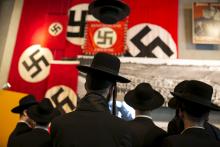
As Israelis mark Holocaust Memorial Day on April 15, a study by researchers at Bar-Ilan University has found that the adult children of Holocaust survivors are more fearful than their mainstream peers about the threat of Iran developing a nuclear weapon.
Given that many studies over the decades have found that children of Holocaust survivors are deeply affected by their parents’ traumatic experiences, Amit Shrira, the study’s author, set out to discover whether these second-generation survivors were more anxious over a potential Iranian bomb than others of their generation. His study was published in Psychological Trauma, a journal of the American Psychological Association.
Shrira compared the feelings of 63 children of Holocaust survivors whose parents lived under a Nazi or pro-Nazi regime to those of 43 children whose parents either fled to unoccupied countries or immigrated to Israel.
The study found that second-generation survivors “exhibit greater preoccupation with the Iranian nuclear threat” than the comparison group.

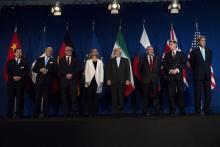
For Christians, Easter is not just a day — it is a season, and, indeed, a way of life. This week is Easter: Monday, Tuesday, Wednesday, Thursday, and so on. Likewise, hope — the message of Easter — is not a feeling, but rather a decision — a choice we make day after day. Hope isn’t easy, but the decision to hope keeps the world going.
Now we have a choice to make: a decision whether to pursue a tough diplomatic process for peace to prevent Iran from developing a nuclear weapon. The United States and Iran — along with the U.K., Germany, France, Russia, and China — now have the beginning framework of a deal that could accomplish just that. But we would have to give it a chance. Much has to be worked out by the June 30 deadline, and it won’t be easy.
Should we give this hope for peace a chance? I believe Christians should answer yes. Here’s why.
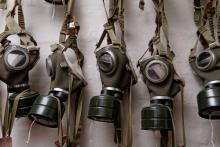
Setsuko Thurlow was 13 when “progress” came to Hiroshima in a white-hot flash. In the dark silence following the nuclear bomb blast, Thurlow recalls children crying, “Mama, help me. God, help me.”
Her sister lived for four days. Many of her 351 dying schoolmates “looked like skeletons with skin hanging from their bones.”
They perished in agony.
Today, Thurlow and other survivors travel the globe, sharing their stories with a new generation for which nuclear weapons are an afterthought — seemingly a hypothetical and abstract threat.
The end of the Cold War had a mixed effect on the nuclear equation. Through dogged diplomacy and effective institutions, disarmament continues, though at a slower pace in recent years. There are now 10,000 operational nuclear warheads in the world, down from a high of 64,000 in 1986.
But the specter of nuclear terrorism and regional conflicts between nuclear weapons states makes nuclear weapons even more dangerous in our international system. Deterrence theory, which governed strategic thinking during the Cold War, is a much less compelling framework today.
Thankfully, most states have forsworn these armaments. Nuclear weapons are not vital to any state’s legitimate security interest. No state or NGO has the capacity to respond to the unfathomable humanitarian crisis that would follow an accidental or intentional use of a nuclear weapon.
Thus a growing global consensus now acknowledges the extreme risk nuclear weapons pose.
Pope John XXIII stated unequivocally in his 1963 encyclical “Pacem in Terris,” “Nuclear weapons must be banned.”
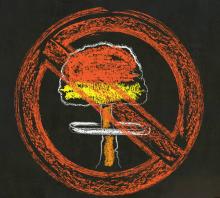
IMAGINE IF YOU will a world in which the most destructive weapons were “conventional” explosives. These bombs, often with nicknames such as “Daisy Cutter” or “bunker buster” or even the “Mother of All Bombs,” have enormous power: The Vietnam-era Daisy Cutter, one of the largest conventional weapons ever used, was designed to flatten a forest into a helicopter landing zone with a blast equal to about 15,000 pounds of TNT.
Now imagine that someone says, “Those conventional bombs aren’t destructive enough. Let’s invent a weapon a million times more powerful, one that releases radiation that magnifies the killing effects for generations. And let’s make 16,000 of those weapons.”
A sane world would respond, “You’ve gotta be kidding.”
But in the real world, it’s no joke.
Today, 70 years after the attacks on Hiroshima and Nagasaki in 1945, the world has 16,400 nuclear weapons—93 percent of them in the arsenals of the U.S. and Russia. The first H-bomb had the force of around 10 million tons of TNT, more than a million times as powerful as the worst conventional weapons.
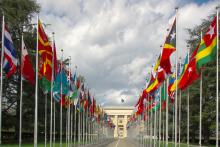
IN APRIL, THOUSANDS of people from across the United States and the world, joined by activists and A-bomb survivors from Japan, will flock to New York to demand that the nuclear powers fulfill their nuclear Non-Proliferation Treaty (NPT) obligations to negotiate a legally binding agreement to completely eliminate their nuclear arsenals.
The NPT Review Conference, held at the U.N. every five years, presents an important opportunity for the 189 signatory nations and for civil society to ensure that this treaty is implemented. The treaty rests on three pillars: 1) non-nuclear states forswear becoming nuclear powers; 2) all signatory nations have the right to generate nuclear energy for peaceful purposes (a serious flaw); and 3) the P-5 nations (U.S., Russia, Britain, France, and China) are obligated to engage in good-faith negotiations to completely eliminate their nuclear arsenals.
Forty-five years after the treaty went into effect, the P-5 have yet to fulfill their part of the bargain, leading to a loss of faith by a growing number of nations and the danger that some will opt out of the treaty to equalize the imbalance of nuclear terror. With the U.S. and Russia having engaged in nuclear war exercises during the Ukraine crisis, simulated U.S. nuclear attacks against North Korea, the U.S.-Chinese arms race, and India and Pakistan again at loggerheads, April’s review conference provides a critical opportunity to press for nuclear weapons abolition and to build the nuclear disarmament movement.

ONE DAY, WHEN I was a student at Christ the King Elementary School in my hometown of Richland, Wash., the nuns gathered all the kids, two by two, and walked us outside to the parking lot. There sat a mobile van emblazoned with the logo of the Atomic Energy Commission and the words “Whole Body Scanner.”
One at a time, we were led into the van, where we laid on a white-sheathed table beneath a large, (scary), medical-looking machine. There was a whirring sound, and after a minute or two we were told to get up and make room for the next child. We weren’t told what the process was for, but it’s safe to assume that the government was interested in the effects of radiation on those of us who were “downwinders” from one of the nation’s largest nuclear complexes.
Richland was (and is) the bedroom community for the Hanford Nuclear Reservation. Hanford was built in the 1940s as part of the Manhattan Project, the massive wartime program that led to the atomic bombs dropped on Hiroshima and Nagasaki at the end of World War II. Hanford’s role was the production of plutonium for the world’s first nuclear weapon, the “test” bomb detonated in New Mexico a few weeks before Hiroshima, and for the bomb that destroyed Nagasaki three days later.
Those weapons were dropped 69 years ago, but the debate about their morality continues. It emerged again this spring when the two Missouri senators proposed renaming D.C.’s Union Station after Harry S. Truman, who authorized history’s only nuclear attack on people. One commenter in a related discussion wrote, “I have a problem with judging past cultures by today's standards. To end WWII we dropped bombs on cities filled with innocent civilians. By today's standards that would be condemned. Are you willing to say we should not have done that to end WWII?”
AMID WORRIES about a new Cold War, of standoffs with old enemies and confrontations with new ones, Harvard professor Elaine Scarry’s latest book is a chilling reminder of the doom our presidentially controlled nuclear arsenal can unleash upon the world. Early on, she reminds us that President Nixon told reporters, “I can get on the telephone and in 25 minutes 70 million people will be dead.”
This boast illustrates Scarry’s thesis: We live in a thermonuclear monarchy, where one person—the U.S. president—can destroy the world. Nuclear doom is an accident waiting to happen, and she reviews a number of barely publicized near misses.
But she sees a solution at hand—the U.S. Constitution, specifically both Article I, Section 8, which says that Congress alone can declare war, and the Second Amendment. The text of the latter reads: “A well regulated militia being necessary to the security of a free state, the right of the people to keep and bear arms shall not be infringed.” (Emphasis added.) Scarry argues that the amendment mandates a second level of citizen consent to war, a further brake to executive power, even after Congress has given its approval—that the writers of the Constitution intended that before the U.S. engaged in any war the people would have to consent to join a militia, a form of collective participation in the decision for war. According to Scarry, our out-of-ratio nuclear weapons stockpile, ready to launch at the command of a single person, has negated the Constitution-mandated chain of accountability and decision-making and is therefore illegal.

An 84-year-old nun was sentenced to nearly three years in prison on Tuesday for breaking into a Tennessee nuclear facility in July 2012.
Sister Megan Rice and two other anti-nuclear activists were convicted last May of breaking into a federal complex that stores enriched uranium.
“Please have no leniency on me. To remain in prison for the rest of my life would be the greatest honor you could give me,” Rice told the federal judge at her sentencing hearing, according to USA Today.
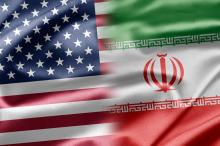
AT LAST, AFTER more than 30 years of isolation since the Islamic Revolution of 1979 overthrew the U.S.-installed Shah, American and Iranian officials are talking to each other. The late September telephone conversation between President Obama and Iranian President Rouhani was an important first step. If the two sides can reach an agreement on ending the nuclear standoff, it could pave the way for other forms of cooperation that could significantly improve regional and global security.
Because of the historical mistrust between the United States and Iran that goes at least as far back as the 1954 CIA-backed coup that overthrew Iran’s democratically elected prime minister, achieving progress will require diplomatic flexibility on both sides. The core objectives of the international community are to prevent Iran from developing nuclear weapons and to guarantee that its nuclear program is solely for peaceful purposes. This can be accomplished by convincing Tehran to accept binding limits on its nuclear program and by robust monitoring mechanisms to guarantee the absence of military-related activities.
Iran’s objectives are to gain international acceptance of its right to develop nuclear energy, including uranium enrichment, and to obtain relief from crippling sanctions. If Tehran takes steps toward accepting limits and agreeing to enhanced transparency and monitoring, Washington should offer an initial partial suspension of sanctions and pledge to lift additional sanctions as progress proceeds. This would help jump-start the talks and strengthen President Rouhani’s hand in the face of hardliners.
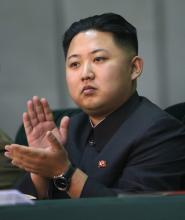
The fact that North Korea’s young leader Kim Jong-un is threatening the world with nuclear holocaust does what World War I did to many theologians who had presumed that history was on a course of inevitable progress.
It is not.
The power of death is enticing, a sin to which Robert Oppenheimer, the father of the bomb, later confessed. The human will to power becomes evil when real soldiers, real nuclear bombs, real missiles, and real threats of destruction are mistaken for childhood toys or computer games where human folly can be erased by hitting a reset button.
We are all children inside, for good and for ill.
AMID THE COUNTRY'S serious fiscal problems, our $775 billion annual defense budget, not to mention our tens of billions of dollars spent on intelligence and other national security expenses, is treated as sacrosanct. Budget-cutters, especially on the Republican side, do not train their sights on the defense budget as they seek to address our flood of red ink, but instead focus on dramatic cuts in the safety net for the poor.
According to former Reagan budget director David Stockman, our $775 billion defense budget is nearly twice as large in inflation-adjusted dollars as the defense budget of Dwight Eisenhower for 1961, during the Cold War. Our FY 2011 defense budget was five times greater than that of China, our nearest competition for this dubious honor; constituted over 40 percent of the world’s entire military spending; and was larger than the cumulative budget of the next 14 nations in the top 15. All of this occurs at a time when our infrastructure is crumbling, our schools are sliding, and one-sixth of our population cannot find or has stopped looking for full-time work.
Stockman suggests that no plausible national defense goals today justify this level of defense spending. He rightly points out that “we have no advanced industrial state enemies” akin to the USSR of Cold War days. He argues that what in fact supports a budget of this size is an ideology of “neoconservative imperialism” and an attempt to function as a “global policeman” even after the world has “fired” us from this role.
Ken Butigan writes on Waging Nonviolence about the emergence of a new anti-nuclear weapons movement. The Washington Post recently reported that the U.S. government is planning to refurbish its nuclear weapons complex over the next 10 years at a cost of $352 million. In response, writes Butigan:
“So we are in the midst of the next phase of the movement for nuclear disarmament, where a series of campaigns across the U.S. are pumping life into the seven-decade struggle. … For those of us who first came to political activism by tackling the nuclear arms race in the early 1980s, the announcement that the U.S. is online to refurbish and reassert its nuclear might far into the future has a glumly déjà vu feel. At the same time, we know the power of people power movements to change history. Together we can build on this emerging next phase to take action, to stoke alternatives and to prompt a powerful nationwide debate…”
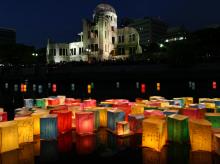
Sixty-seven years ago today, at 8:15 on the morning of August 6, 1945, it was a sunny morning in Hiroshima, Japan, a city of more than 300,000 people. Some were on their way to work, children were playing in the streets. Suddenly the sky exploded in a brilliant and hellish flash of light as a 15 kiloton nuclear bomb was dropped from a U.S. plane in the sky overhead. More than 70,000 people were instantly killed, some with their bodies etched into the pavement like eerie shadows. By the end of the year, as many as 140,000 had died, after five years, the toll was estimated as high as 200,000. Three days after Hiroshima, on August 9, 1945, a second nuclear bomb was used against Nagasaki, Japan. An estimated 75,000 people were killed in that explosion.
Today, according to the Associated Press, the annual ceremonies held in Hiroshima’s peace park to commemorate the bombing were attended by 50,000 people, including representatives from 70 countries. Two Americans with family ties to the bombings also attended.
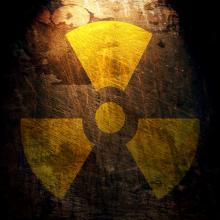
Kansas City, Mo., is in a unique position — it's the only city in the country where, this November, local voters will have a say over U.S. nuclear weapons policy.
That’s because the city council arranged a deal to finance a new nuclear weapons parts plant there; local bonds were issued and a local agency (the Planned Industrial Expansion Authority, PIEA) owns the plant. This is entirely unprecedented; nowhere else in the world has any entity other than a national government had direct financial involvement in nuclear weapons production.